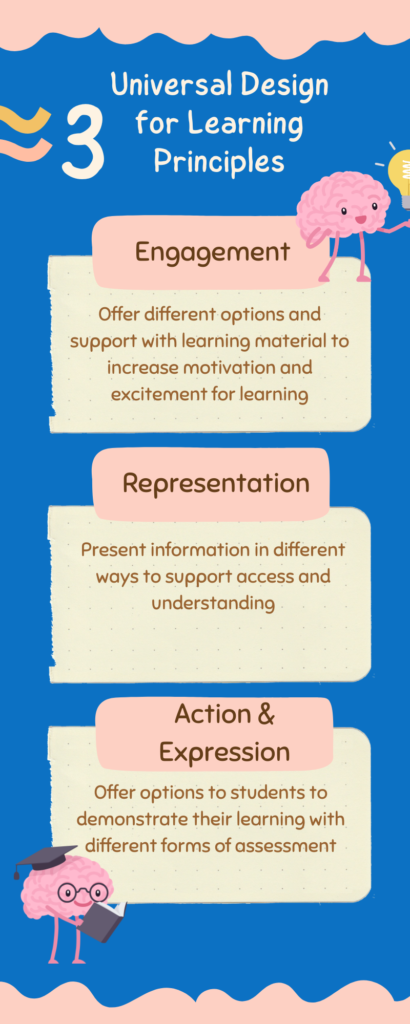One of the main objectives of Simpl4all is to equip trainers, educators and teachers with the knowledge and tools to create more inclusive learning environments in order to help all learners to achieve their learning and professional goals.
Universal Design for Learning (UDL) is an accessible and practical educational framework that can provide educators with the knowledge and tools to improve and develop diverse teaching practices focused on human variability and diversity.
But what is it exactly?
Feel free to watch this video (https://www.youtube.com/watch?v=bDvKnY0g6e4) which summarises the key points and then keep reading!
Universal Design for Learning, which was developed in the 1990s, draws its inspiration from the concept of Universal Design in architecture, which promotes the design of products and spaces that are accessible to all individuals, regardless of their abilities. In the context of education, UDL aims to create learning environments that are welcoming and beneficial to all students, regardless of their backgrounds, learning styles, disabilities, or strengths.
The core idea behind UDL is to provide multiple means of representation, expression, and engagement in the learning process. This involves utilizing diverse instructional methods, materials, and assessments that cater to the varying needs of students. The framework goes beyond a one-size-fits-all approach, recognizing that every student learns differently and may require different strategies to grasp and demonstrate knowledge effectively.
Principles of Universal Design for Learning

UDL’s primary goal is to create an inclusive learning environment where every student feels valued and can participate fully in the educational process. By providing diverse means of representation, expression, and engagement, UDL removes barriers to learning and ensures that students with various learning preferences and abilities can thrive.
Furthermore, one of the strengths of UDL lies in its recognition that students have unique learning profiles. By embracing this diversity, educators can tailor their teaching methods to meet the needs of each student, facilitating better understanding and mastery of the subject matter.
Also, it is often the case that when students are given the freedom to choose how they interact with the learning content, they become more engaged and motivated. By integrating activities that resonate with their interests and preferences, UDL fosters a positive learning experience and reduces the likelihood of disengagement or apathy.
UDL has been shown to positively impact learning outcomes for all students. By catering to various learning styles and abilities, the framework ensures that students can access and process information effectively, leading to better retention and application of knowledge without stigmatising different groups of people in the process.
Overall, the emphasis on inclusivity, flexibility, and individualization in the learning process makes UDL a powerful tool for educators, trainers and teachers. By incorporating diverse means of representation, expression, and engagement, UDL enables educators to create more accessible and engaging learning environments that benefit all students, ensuring that no student is left behind.
To be sure you don’t miss any news about the project, subscribe to our newsletter and follow us on LinkedIn!

